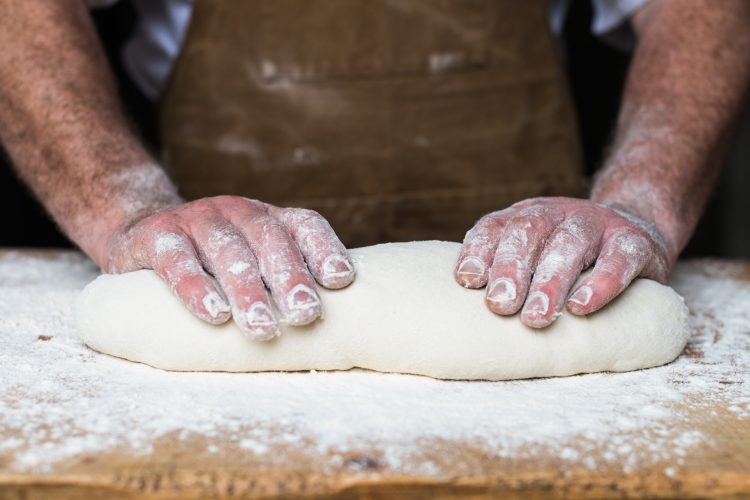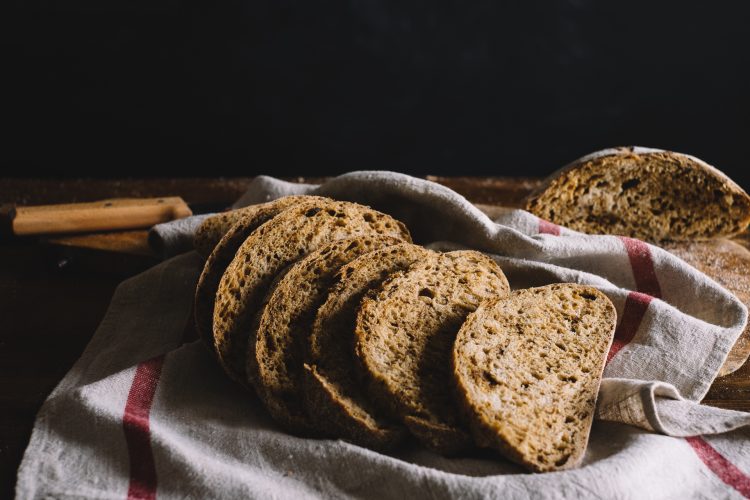
Lovingly Artisan is a bakery based in the Lake District, on the outskirts of Kendal, in the picturesque hills of Cumbria. A charming, converted barn is the home of the bakery and the employees of the bakery all share the same philosophy whereby the classic, old methods are utilised but with the addition of some new ways of thinking, and baking. These new methods include using raw milks, ancient heritage grains and double fermentation within the breads.
Today’s recipe is for a classic tin baked sourdough loaf, and comes to us courtesy of Lovingly Artisan.
The sourdough method of making bread is often a challenge for any baker trying it for the first time. Free form bloomers and cobs make that even more challenging. At Lovingly Artisan they love to make all shapes and sizes of sourdough bread, however, for the purposes of this recipe a traditional tin is the most practical and forgiving way of making your daily bread.
If your dough making skills are still under development a tin will make your life easier, especially during proving and baking when it can all go a pear-shaped. The resulting bread will often also keep better than other shapes, and it has the added advantage of being a lot easier to slice.

Ingredients for the leaven (Make this leaven 24 hours beforehand)
20 g mature starter/mother
40g water 30’c
40g strong white flour
Ingredients for the bread dough
50g wholemeal dark rye flour
450g strong white bread flour
375g water at 30’c
10 g fine salt
100g leaven
Method
Make the leaven by mixing together the mother, flour and warm water in a clean jam jar. Place the lid loosely on top and leave at room temperature 21-25°C for 24 hours.
To make the dough place the water and leaven into a mixing bowl and stir together till mixed. Now add the flour and with a scraper mix together taking care to scrape down the sides of the bowl at regular intervals until you get a smooth dough with no lumps, you are only mixing the ingredients together at this point the kneading comes later. Now cover the bowl with a damp cloth and leave to stand for two hours to Autolysis. This time allows the natural enzymes in the flour to activate and make the job of kneading a lot easier.
Now add the salt and use your fingers to break the dough apart and allow the salt to mix evenly throughout the dough
Kneading or more to be more descriptive stretching the dough. Firstly, dip your hands into a jug of warm water. Then push your fingers between the bowl and the dough and grasp the dough pulling it upwards feeling it stretch and tension. Then fold that stretched dough down towards the opposite side of the bowl.

Turn the bowl slightly and repeat that process till you work your way around the bowl, doing this several times until you feel the dough start to tighten. Cover the bowl with the damp cloth and leave for 30 minutes. After 30 minutes has elapsed repeat the process and repeat another four times. You should now have a smooth silky dough. Cover and leave for two hours to ferment and grow.
After two hours your dough should feel lighter to the touch and have more volume. It’s time to shape the dough for the tin. First lightly grease the bread tin with oil. Then use your scraper to remove the dough very carefully from the bowl onto a lightly floured work surface. Gently flatten the dough with your flattened hand. Looking at the dough fold in two sides to create a rectangle of dough. We now want to shape the dough like a swiss roll.
Starting at one end fold a small amount of dough over to create a tight little fold that will become the centre roll. Each time you fold the dough think about stretching the dough and keeping it as tight as possible. When you have finished creating your little swiss roll of dough drop into the tin seam downwards.
Prove your tin loaf till the dough sits just above the rim of the tin. Bake in a preheated oven at 180°C for 40 to 45 minutes. Once cooked remove from the oven and turn out onto a wire tray to cool.







